Illustrations from
Kitāb al-mawālīd
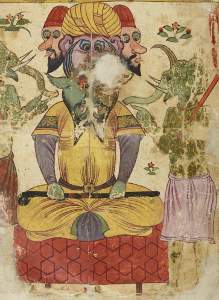 The Demon Zauba'a with mace |
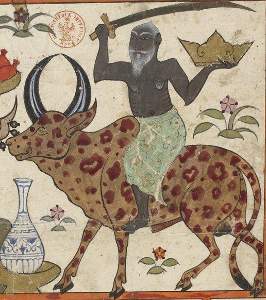 Negroes in Taurus, Leo, Libra & Pisces |
 Negroes in phases of the moon |
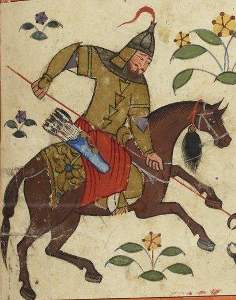 Armoured Cavalry |
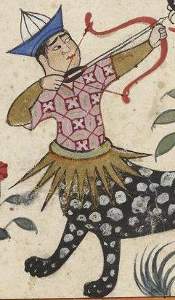 Sagittarius |
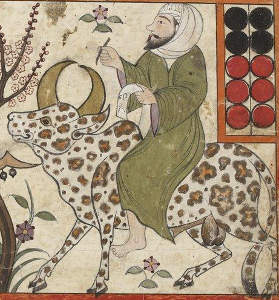 Mercury in conjunction with Taurus |
 The Demon Zauba'a with mace |
 Negroes in Taurus, Leo, Libra & Pisces |
 Negroes in phases of the moon |
 Armoured Cavalry |
 Sagittarius |
 Mercury in conjunction with Taurus |
Armoured cavalry on foot in Aries
Armoured cavalry on foot in Gemini
Armoured cavalry in Scorpio
Negroes with axe & armoured cavalry with ventail in Capricorn
Negroes in Aquarius
Title: Book of nativities, attributed to Abu Maʿschar
Author of text: Abū Maʿšar al-Balḥī, Ğaʿfar ibn Muḥammad ibn ʿUmar (0805?-0886).
Publication Date: 1300
Subject: Astrology
Type: manuscript
Language: Arabic
Format: Many coloured drawings, the first four represent Satan and other demons. - Paper. - 37 sheets. - Height, 36 inches; width 26 and a half centimeters. About 27 lines per page.
Source: Bibliothèque nationale de France, Département des manuscrits, Arabe 2583
Description: Kitab al-mawālīd
Description: The drawings show the figures of the zodiac signs, the phases of the moon personified, and other bizarre pictures. The first pages are missing. The last two pages, more modern than the rest of the ms., are dated to the year 700 AH (1300 AD).
Each of the planets can be identified by their typical iconography. Mercury (al-cutarid) is a man with a scroll or book; Venus (al-zuhara) is a female musician playing an instrument; Mars (al-mirrikh) is a warrior, holding a sword and a severed head; Saturn (al-zuhal) a dark skinned man with a white beard; Jupiter (al-mushtari) is a sage or a judge, wearing a turban; the Moon (al-qamar) is a human figure holding a crescent and the Sun (al-shams) is a human figure holding a solar-disk.